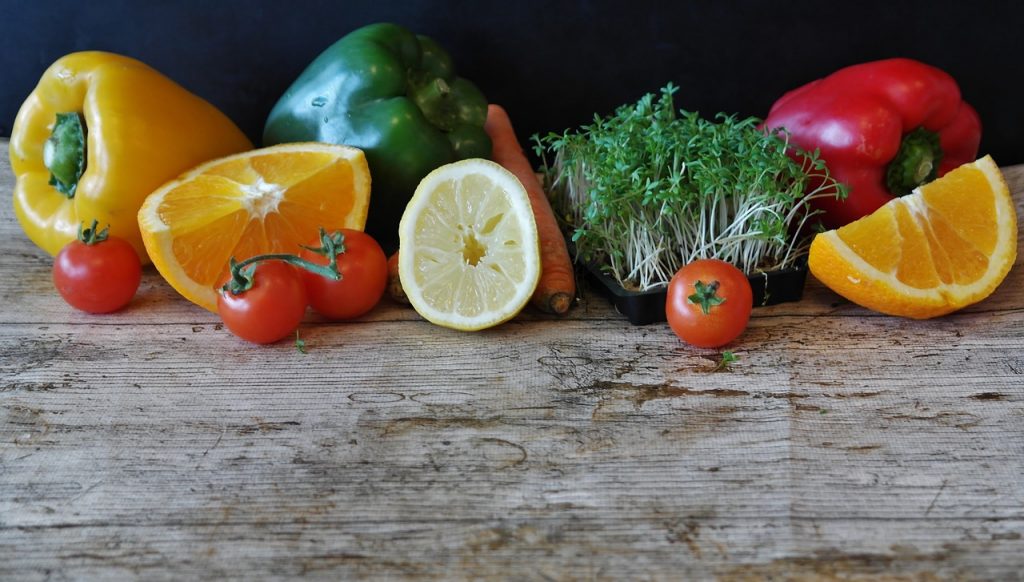Fruits and vegetables provide fiber, essential vitamins and minerals, and phytonutrients. “Phyto” refers to the Greek word for plant. Phytonutrients, sometimes called phytochemicals, are chemicals produced by the plant to aid in growth and defense against predators, bacteria and fungi, and environmental threats, such as UV light.
You can think of phytochemicals as contributing to the health of the plant. When humans eat plants containing these phytochemicals, we see similar health effects. Although not considered essential for life, evidence shows that phytochemicals provide health-promoting benefits that help reduce the risk of various chronic diseases. Several factors can affect the amount of essential nutrients and phytochemicals in a plant and how well our bodies are able to absorb and use them when eaten. Follow these tips to reap all the health benefits fruits and vegetables have to offer.

1. Eat a variety
Different fruits and vegetables provide us with different nutrients, as well as different phytonutrients. Small amounts of many phytonutrients may benefit human health more than large amounts of few phytonutrients.
2. Choose local, when possible
Nutrients and phytonutrients degrade after harvest. By choosing local produce, you are decreasing the time it takes for the produce to travel from farm to table, meaning less time for nutrients to degrade. If you cannot get it locally, consider purchasing frozen. Fruits and vegetables are often frozen at the peak of freshness.
3. Select vibrant, intensely colored fruits and vegetables
Some phytochemicals are pigmented, therefore more richly-colored produce will have higher concentrations of these phytochemicals. However, that doesn’t mean we should exclude produce that is neutral in color by nature. Onions, cauliflower, and artichokes are packed with nutrients and phytonutrients.
4. Don’t discredit the small stuff
The skin to flesh ratio is higher in smaller produce, and a high concentration of phytochemicals is found in the skin.
5. Cut and prep fruit and vegetables yourself
Purchase fruits and vegetables in their whole state versus pre-cut or pre-shredded and cut them yourself. Processing can cause phytonutrients to degrade significantly, in as little as 6 hours.
6. Consider canned fruits and vegetables, when necessary
Canned produce like tomatoes, sweet potatoes, and pumpkin are still rich in phytochemicals, and actually become more bioavailable (better absorbed) due to the heat and pressure they are exposed to in the canning process.
7. Eat the skins, seeds, and pith (if edible)
Remember plants produce phytochemicals to aid in defense and growth. Higher concentrations of phytochemicals can be found in these parts due to the important function they serve in the growth, defense, and reproduction of the plant.
8. Eat them fresh and cooked, too
While some phytochemicals are better absorbed when eaten raw, others are more bioavailable when cooked. For example, beta-carotene a phytochemical found in red and orange vegetables, is better absorbed by the body when cooked.
9. Avoid boiling vegetables
Water-soluble nutrients and phytonutrients can leach in the cooking water. Unless you plan to drink the liquid, as in a soup, then it is best to choose a different cooking method, such as steaming.
10. Add some healthy fats
Some nutrients and phytonutrients are fat-soluble, meaning they dissolve in fat/oil. We better absorb these nutrients/phytonutrients when we eat them with a fat. Topping a green or tomato salad with an oil-based dressing is one way to reap this benefit.
Fruits and vegetables are an important part of a healthy diet, but don’t feel limited to only eating them in their fresh and raw form. Select a variety of fruits and vegetables, and prepare them in a variety ways, however you are most likely to enjoy them. These tips are meant to help you maximize the full potential they can contribute to your overall health.


